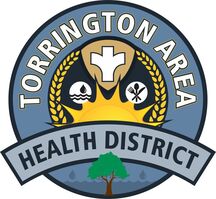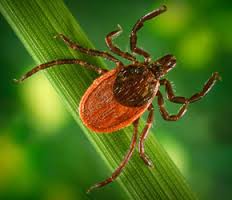Lyme Disease
Lyme Disease is an infection caused by the spirochete bacteria Borrelia burgdorferi. It is transmitted by a bite from a black legged (deer) tick. In Litchfield County the species of ticks associated with Lyme Disease is Ixodes scapularis. Lyme Disease often begins as a skin rash. Some people do not know a tick has bitten them and some people do not get the classic red skin rash. Antibiotics are used to treat the disease.
Since Lyme Disease is a multi-systemic illness, there are a wide variety of possible symptoms. These symptoms may vary from mild to severe, and they may come and go. It may be helpful for your physician if you photograph your rash (if you get one) and log all symptoms on a daily calendar. The longer the disease remains undetected, the more difficult it is to treat. Since early detection and treatment is critical, seek medical advice as soon as possible.
Early symptoms may include:
Late symptoms may include:
Other sources of information
Other Tick-borne DiseasesThe same tick that transmits Lyme Disease, may transmit other diseases at the same time. Research indicates that it takes 24 to 36 hours after attachment to transmit Lyme Disease BUTother diseases can be transmitted in less time.
Co-infection with two or three tick-borne diseases may complicate diagnosis, increase severity of symptoms, and prolong illness.
ANAPLASMOSIS (ehrlichiosis)
Several different Ehrlichia bacteria exist but the one associated with the black-legged deer tick is called Human Granulocytic Ehrlichiosis, HGE.
Anaplasmosis can most commonly cause high fever, chills, sweating, sever headaches and muscle aches. Fatigue and gastrointestinal complaints may include nausea, vomiting and diarrhea. The illness may vary from mild to severe to life-threatening. Effective antibiotics eradicate the infection and fewer problems develop with earlier treatment. Other pre-existing conditions may worsen the course of action.
BABESIOSIS
Babesiosis is an infection caused by a malaria-like protozoan. The disease usually begins with non-specific, flu-like symptoms 1-3 weeks after a black-legged deer tick bite. Symptoms often include spiking fevers and chills. The disease may result in anemia-causing fatigue and poor exercise tolerance. The infection may be asymptomatic to mild in the young. It can be severe and even life-threatening in patients without spleens, immune-compromised patients, and older patients with pre-existing medical conditions. Fewer complications occur with early treatment and effective antibiotics.
CLICK HERE FOR THE TICK SUBMISSION FORM
Since Lyme Disease is a multi-systemic illness, there are a wide variety of possible symptoms. These symptoms may vary from mild to severe, and they may come and go. It may be helpful for your physician if you photograph your rash (if you get one) and log all symptoms on a daily calendar. The longer the disease remains undetected, the more difficult it is to treat. Since early detection and treatment is critical, seek medical advice as soon as possible.
Early symptoms may include:
- Rash - often bull's eye in shape, but not always. May appear from 3 days to 1 month after the bite of an infected tick.
- Headache
- Stiff Neck
- Chills and Fever
- Prolonged Fatigue
- Muscle and/or Joint Pain
- Swollen Lymph Nodes
Late symptoms may include:
- Arthritis - brief bouts of pain and swelling, usually in 1 or more joints.
- Neurological abnormalities - Bell's Palsy, meningitis, numbness, pain, impaired memory and concentration, visual impairments
- Cardiac involvement - irregularities of heart rhythm, shortness of breath, dizziness
Other sources of information
Other Tick-borne DiseasesThe same tick that transmits Lyme Disease, may transmit other diseases at the same time. Research indicates that it takes 24 to 36 hours after attachment to transmit Lyme Disease BUTother diseases can be transmitted in less time.
Co-infection with two or three tick-borne diseases may complicate diagnosis, increase severity of symptoms, and prolong illness.
ANAPLASMOSIS (ehrlichiosis)
Several different Ehrlichia bacteria exist but the one associated with the black-legged deer tick is called Human Granulocytic Ehrlichiosis, HGE.
Anaplasmosis can most commonly cause high fever, chills, sweating, sever headaches and muscle aches. Fatigue and gastrointestinal complaints may include nausea, vomiting and diarrhea. The illness may vary from mild to severe to life-threatening. Effective antibiotics eradicate the infection and fewer problems develop with earlier treatment. Other pre-existing conditions may worsen the course of action.
BABESIOSIS
Babesiosis is an infection caused by a malaria-like protozoan. The disease usually begins with non-specific, flu-like symptoms 1-3 weeks after a black-legged deer tick bite. Symptoms often include spiking fevers and chills. The disease may result in anemia-causing fatigue and poor exercise tolerance. The infection may be asymptomatic to mild in the young. It can be severe and even life-threatening in patients without spleens, immune-compromised patients, and older patients with pre-existing medical conditions. Fewer complications occur with early treatment and effective antibiotics.
CLICK HERE FOR THE TICK SUBMISSION FORM



